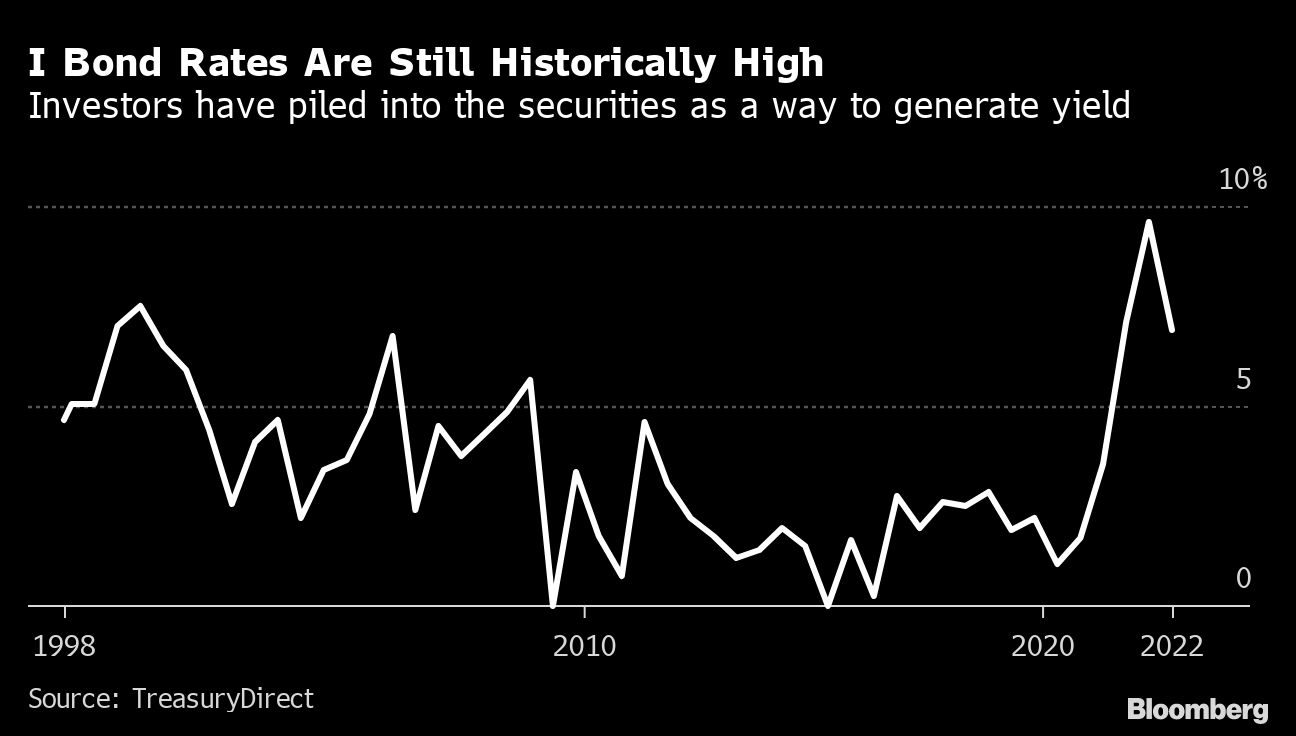The new year brought another surge of cash into Series I savings bonds.
Americans bought $4.26 billion worth of the securities last month for the best January on record, according to the US Treasury Department. That compares to $3.29 billion in January 2022 and just $106 million in the first month of 2021.
Designed to protect investors from inflation, I bonds were a rare bright spot last year as both stocks and bonds slumped. The current interest rate of 6.89% for I bonds, which will last through April 30, is still luring fresh cash, although it’s down from a record high of 9.62% in the six months prior.

Since there’s an annual $10,000 cap on I bond purchases for each individual, investors are taking advantage of the calendar reset to pour money into the safe-haven securities once again, experts say. That’s despite the recent rally in risk assets: The S&P 500 just notched a 6.2% gain in January for its best start to a year since 2019, while the Nasdaq 100 index of tech stocks posted its best January in more than two decades.
Yet with inflation still elevated and a possible recession on the horizon, investors are seeking to protect their cash from rising prices and market uncertainty.
The interest rate on I bonds comprises both a fixed rate, which remains constant, and a variable rate that is set twice a year by the Treasury Department on the first business day of May and November. The latter rises and falls with the consumer price index. Since inflation is cooling as the Federal Reserve tightens monetary policy, the rate is likely to fall in May.
Jay Zigmont, founder of Childfree Wealth in Mississippi, says his clients were eager to buy I bonds in January again.
“Rates are still attractive and provide an inflation hedge,” he said.
Appealing Alternatives
Others are looking toward different options for their cash, as rising interest rates make I bond alternatives look more appealing.
Chris Diodato, founder of WELLth Financial Planning in Palm Beach Gardens, Florida, is no longer recommending I bonds to clients, since the rate is likely to drop below 5% in May, he said. Plus there’s the onerous lockup period — I bonds must be held for at least a year, and cashing them in before five years means losing interest from the prior three months.
He prefers certificates of deposit, since the rates can be similar and there are options without lockup periods or contribution limits.
Goldman Sachs Group Inc.’s Marcus, Capital One Financial Corp., Barclays Plc and Ally Bank all offer CDs with rates that have climbed in recent months as the Fed hikes benchmark interest rates. Marcus currently offers a 13-month CD with no withdrawal penalty for 3.85%, while Ally has a no-penalty, 11-month CD with the same rate.
US Treasury yields are also rising. The 20-year yield is currently about 3.6% and the 30-year is 3.5%. In January alone, investors poured almost $2 billion into the iShares 20+ Year Treasury Bond ETF (TLT), its best month of inflows since July.
Muni bonds are seeing increased attention as well, with their rising yields and tax-exempt status. Two popular ETF options for buying munis — BlackRock’s iShares National Muni Bond ETF (MUB) and the Vanguard Tax-Exempt Bond Index ETF (VTEB) — both just had their best year of inflows on record, attracting $9 billion and $11 billion, respectively. Right now, they both have a 12-month yield of 2.11%.
Still, it’s hard to beat I bonds right now, according to Zigmont.
“An effectively risk-free return of 6.89% is still attractive after making it through 2022,” he said. “I bonds are a way to have some safety.”
This article was provided by Bloomberg News.








